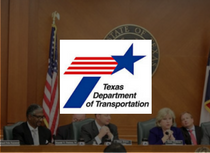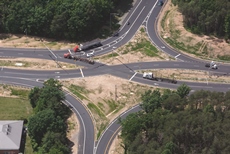
Design-Build Perspective on Texas DOT Sunset Review
Andrew Ausel | December 6, 2016
The Texas State Legislature is getting ready for a big year. Unlike other state legislatures, Texas is one of only a few legislatures that meet once every two years. In 2016, the state legislature was out of session but in no way inactive. Instead of sitting idle, Texas conducts its legislative business in off-years through state commissions. These commissions are charged with evaluating state agencies and policies in order to issue recommendations for positive change. In 2016, commissions heard public testimony, fielded recommendations and decided on packages of changes to bring to the full Legislature in 2017.
Among these commissions is the Sunset Commission, which looks at all the laws that are sunsetting or expiring in the coming year. Generally, sunsets are used for pilot projects or a trial run at an innovative policy, but in Texas entire agencies are given sunset dates, including the Texas Department of Transportation (TxDOT), whose sunset date is in 2017.
Talk about a task. According to their 2016 report, the Sunset Commission expects TxDOT to handle over $80 billion worth of work over the next 10 years. And on a national design-build stage, Texas was recently identified in a report by Onvia as the fifth largest state and local market for design-build contracting. As such an important market, the report recently completed by the Sunset Commission identified some key recommendations that are sure to impact the design-build industry.
Recommendation 1: “Develop criteria for applying project incentives such as milestone payments”
As one of the recommendations to create more tools for project oversight, the Commission recommended a DBIA Best Practice. The report found that TxDOT is dealing with a lot of projects that are running behind schedule and it is costing the state a lot of money. The Commission recommended that TxDOT utilize a number of policies, including milestone payments or incentives. Incentives are not only a DBIA Best Practice, but one that is used frequently on DBIA Award-winning projects such as the SR 520 Evergreen Point Floating Bridge, which won the 2016 Award of Excellence in Design (Engineering).
Recommendation 2: “Provide additional guidance and training for newly decentralized responsibilities such as managing design-build contracts and certain professional engineering services procurements”
Education and training are essential to any successful design-build project. According to the report, TxDOT’s districts have experienced a “dramatic increase in the use of outsourced construction engineering inspectors.” As a strategy for enhancing oversight, the Commission recommended these new staff be provided adequate education on design-build project delivery. In a recent letter to public owners, DBIA instructor Richard Shelton, P.E., DBIA, CHC, laid out why education is so important for design-build delivery. In the letter, Shelton shared, “Design-build is different in most ways from traditional project delivery methods …. It takes a trained, experienced and collaborative team of owners, designers and construction contractors to achieve the greater value possible with design-build.”
Recommendation 3: “Consider past performance in determining bid capacity through a process defined in rule”
Consideration of past performance in the Request for Proposals (RFP) is an important component to ensuring a quality product is delivered within the project schedule. The Commission identified poor performing contractors as contributors to construction delays which both cost time and place an undue burden on local residents and businesses. Implementing Qualifications-Based Selection (QBS) or putting greater weight in the selection process on qualifications allows agencies to properly weigh past performance and bring in experienced teams with the capacity for delivering projects on time.
Recommendation 4: “Develop a risk-based approach to reviewing and approving contracts”
Risk management is one of the top benefits of using a properly structured design-build contract. Allocation of risk not only reduces the possibility of financial losses for the owner, but directly incentivizes delivery of the highest quality product by the design-build team. We’ve seen strategies like this work time and time again which is why you can find implementing techniques for this very thing in all of DBIA’s Best Practices.
No state process for procuring design-build services is perfect. While Texas may have one of the largest design-build portfolios in the nation, they face similar challenges experienced by DOTs nationwide. In fact, in our most recent survey of state DOTs, we identified that 81% of owners surveyed are interested in owner-focused training. Research has shown that when implemented correctly (what we like to call Design-Build Done RightTM), design-build can cut time and money on projects of all sizes. Time will only tell how these recommendations will be incorporated into practice, but for now they serve as a good reminder that there is always room for improvement.
The full report and executive summary are publicly accessible and available here.
<< From the Mag: Owner Spotlight on UDOT | New Year, New Leadership >>
Related Stories:
(Inter-)change is in the Air








